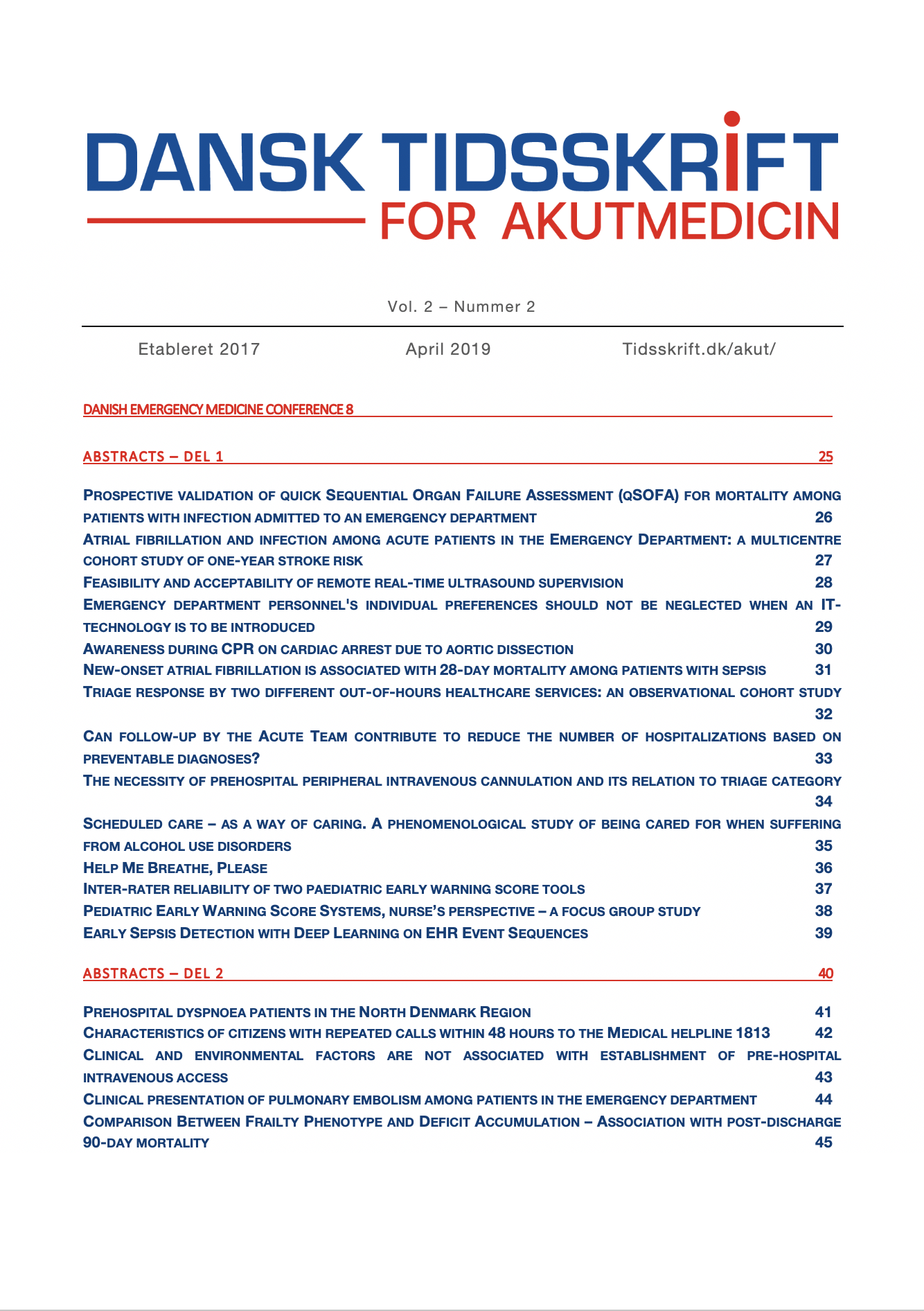Abstract
Background: Patients with infection presenting with new-onset atrial fibrillation (AF) are frequent in emergency departments (ED). Also, this combination could be associated to increased risk of stroke, and some patients might therefore benefit from thromboprophylaxis. Our aim was to describe the prognosis for concomitant infection and new-onset AF at ED arrival.
Methods: Cohort study of patients presenting in one of four Danish or Swedish EDs. Odense University Hospital and Hospital of South West Jutland, Denmark, from March 13thof 2013 - April 30thof 2014 or the ED at Skåne University Hospital and the ED at Helsingborg Hospital, Sweden, from January 1 2010 - December 31 2014. AF was identified by electronic ECG records and, manually validated with high agreement (kappa 0.86 (95% CI, 0.782 - 0.947), positive predictive value 95% (95% CI, 81.8 - 99.3)). Infection was identified using discharge diagnosis. Patients were followed from hospital admission until a diagnosis of ischemic stroke, death or 365 days after ED contact, whichever came first. Primary outcome was 1-year stroke risk for patients with infection and new-onset AF, and for patients with infection and preexisting AF, compared to patients with infection without AF. Outcomes were calculated as hazard ratios (HR).
Results: Some 111,448 patients (median age 64, 49.5 % male) were included and 13,949 (12.5%) had an infection. Of these 1,078 (7.7%) had new-onset AF and 884 (6.3%) had preexisting AF (474 (53.6%) was not in a current oral anticoagulation therapy (OAC)). One-year stroke risk, after adjusting for sex and age, was 1.1 (95%CI, 0.7 – 1.7) in patients with infection and new-onset AF. Patients with infection and preexisting AF not receiving OAC had an adjusted one-year stroke risk of 2.1 (95%CI, 1.4 – 3.2) and patients receiving OAC it was 1.6 (95%CI, 1.0 – 2.5), compared to patients with infection but no AF.
Conclusion: ED patients with infection and new-onset AF had a similar 1-year stroke risk as patients with infection and no AF. Patients with infection and preexisting AF show an increased 1-year stroke risk with or without OAC therapy.
Licensed under a Creative Commons Attribution 4.0 International License (CC BY 4.0).
© The Author(s).

